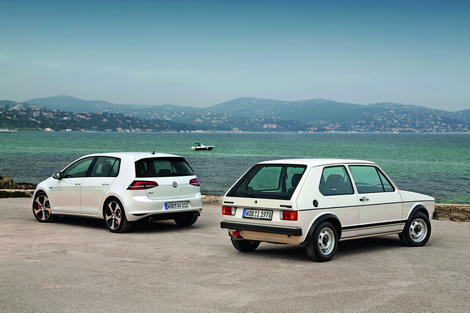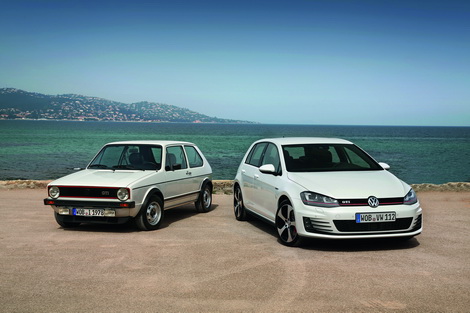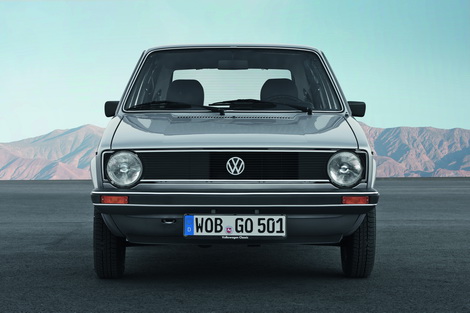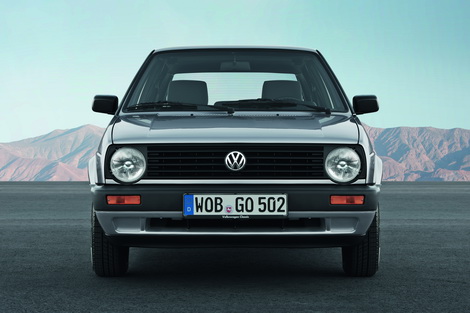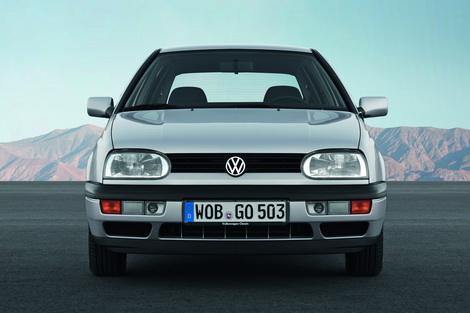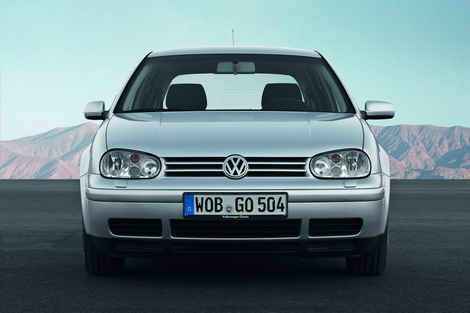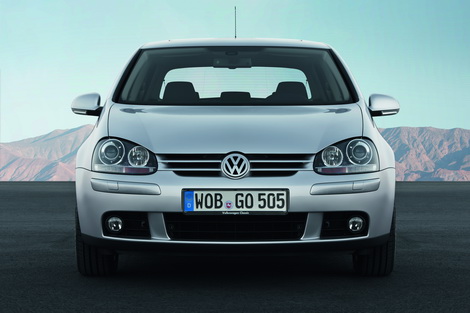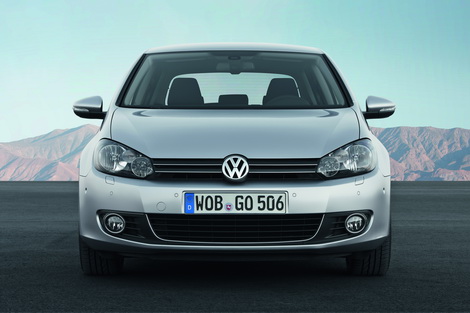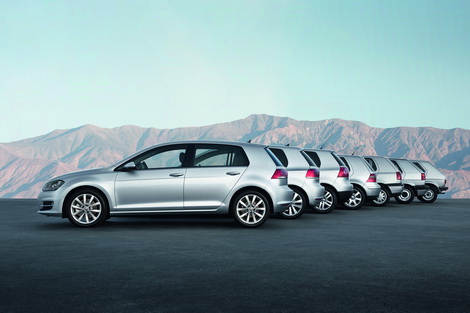You do tend to forget just quite how big a revolution it was. Up to 1974 Volkswagens had been primarily rear-engined, air-cooled and only fractionally removed from that iconic pre-war design, the Beetle. The Golf (officially the Mk1 Golf is the Volkswagen Typ 17) was designed to replace the most popular car the world had ever seen up to then - a car that would eventually sell 20 million units around the world before being pensioned off, 70 odd years after it was first designed. That's not tricky, not difficult; that's ruddy impossible.
Volkswagen certainly didn't seem to be making things easier for itself. For a start, the Golf wasn't an update or a development; it was a totally new start. Front-engined, water-cooled, front-wheel drive. None of these things were common at Volkswagen before 1974. Thank heaven then that Wolfsburg turned to the genius (no other word for it) that is Giorgetto Giugiaro for the exterior design. Given the way Volkswagen design was running in the seventies, without his input the first Golf may well have looked bulky and a bit bland. Giugiaro instead invested that first model with crisp, sharp-edged lines that never strayed too far from simplicity but which still, to this day, look fresh and up to date. Not many 40-year-olds can say that...
Of course what also helped was that Volkswagen got the mechanical package right first time. Torsion beam suspension for the rear kept weight, complication and intrusion into the practical luggage compartment down to a minimum, while McPherson strut front suspension made contemporary rivals such as the Morris Marina look positively Stone Age.
The result was that the Golf handled with a sharp, zingy crispness and even its relatively modestly powered engines could push it along at a decent clip. No wonder buyers went berserk. Volkswagen would eventually sell more than six million Mk1s, reversing the disastrous sales slide that hit the Beetle in its final European years and which had pushed Volkswagen to the brink of bankruptcy.
Of course, it could all have ended there. The Golf could have been one of several neat, sharp-edged hatches born in the seventies that came, went and were promptly forgotten. In 1975 though, Volkswagen launched the first ever GTI. It had just 110hp, but in that light Giugiaro body that was enough for some hair-raising performance, and once the GTI was done killing off the last of the antediluvian roadsters and sports cars from the sixties, it set about turning the Golf as a whole into a true motoring icon. It is because of the GTI that we still have the Golf, that it has become such a motoring touchstone and a financial pillar that supports the likes of Audi, Skoda, Bentley, SEAT, Lamborghini and Bugatti - and even Ducati.
The MkII Golf came along in 1983 (although Mk1 production would continue for many years in other markets, only finally being killed off in South Africa in 2009) and was essentially more of the same, but better. The styling got a little chunkier, the cabin became a little more advanced and the GTI got a little more powerful. More significantly though, this is the point where Volkswagen realised that not only did it have a hit car on its hands, it had a classless success, a car that could lift The People's Car from its basic, cheap-and-cheerful roots to the heights of true premium desire. This was of course the decade when BMW and Mercedes-Benz began their long march from rarefied expensive car status to mainstream success and Volkswagen-owned Audi wouldn't be long following in their footsteps.
Volkswagen though is still unique amongst mainstream car brands in that it can sell you a car that competes on price and spec with the likes of Ford and Opel, but which carries a badge cachet (and a resale value) that is significantly higher up the food chain. All of that started here, when Volkswagen began its clever advertising campaigns ("The man who bet everything on red and it came up black...", "If only everything in life was as reliable...") and the Golf began its inexorable rise into the social stratosphere.
Almost all of which nearly came to a crashing halt with the MkIII Golf, which was launched in 1993. Heavier, dumpier to look at and beset with reliability issues, the third-gen Golf almost killed the Golf name off and came damn close to killing Volkswagen. Even a ritzy 2.8-litre VR6 six-cylinder version that was compared favourably to contemporary examples of the BMW 3 Series couldn't disguise the fact that this Golf was a clunker and the cherished GTI was a shadow of its former self.
Along came Dr Ferdinand Piech, scion of the Porsche family, creator of the 917 Le Mans racer and the Audi Quattro rally car and a man on a mission to revive Volkswagen. First job on the table - fix the Golf. Which he duly did, with the MkIV that arrived in 1997. Gone was the third gen's clumpy styling in favour of something much more slick (it still looks good today, actually) and a chassis that, while not as pin-sharp as that in the Ford Focus, was at least decent to drive now. The trump card was the interior though - beautifully laid out and made, it rivalled the best that even Mercedes-Benz could produce and introduced the world to the concept of the soft-touch dash. It was a masterstroke and buyers flocked back to Volkswagen and the Golf.
The GTI was still a problem child though, even with the addition of a peppier 150hp 1.8-litre turbo engine. It would take the arrival of the MkV Golf in 2004 to reverse that. The MkV itself is still something of a landmark car - probably the most over-engineered family hatch in history, a car that was so expensive for Volkswagen to build that it had to rush through a facelift to morph it into the 2008 MkVI so as to reduce input costs at the factory. Built with a solidity to make bank vaults blush, the MkV also saw the return of the true, the great GTI - now with a 200hp turbo engine and groovy retro-seventies tartan seats and golf-ball gear shifter (ja, you see, we Germans do have ein sense of humour?). Personally, I don't reckon the MkV GTI has been bettered. Its combination of main-road refinement with back-road agility and park-it-on-the-road practicality remains a pinnacle in my mind - even the more sophisticated MkVII Golf GTI, on sale now, can't quite match up to my memory of that first hot dash in a MkV.
The current MkVII Golf marked its own interesting moment for Golf evolution though - the point at which the halo car (the GTI) was actually overtaken by its humbler brothers. For my money, it is now the standard Golf, say a nicely specified 1.4 TSI, that is the superior car to the sporty one. Why? Simply because for the money you spend on a GTI, it would want to be that good. But for the money you spend on a standard Golf, it's just astonishingly good, and rightly awarded such plaudits as World Car of the Year and European Car of the Year.
So happy birthday Golf. Blow out the candles, enjoy the cards, and try to avoid the birthday bumps. And then get back to work. The Mark VIII is already on the horizon and it has a heck of a legacy to live up to...


